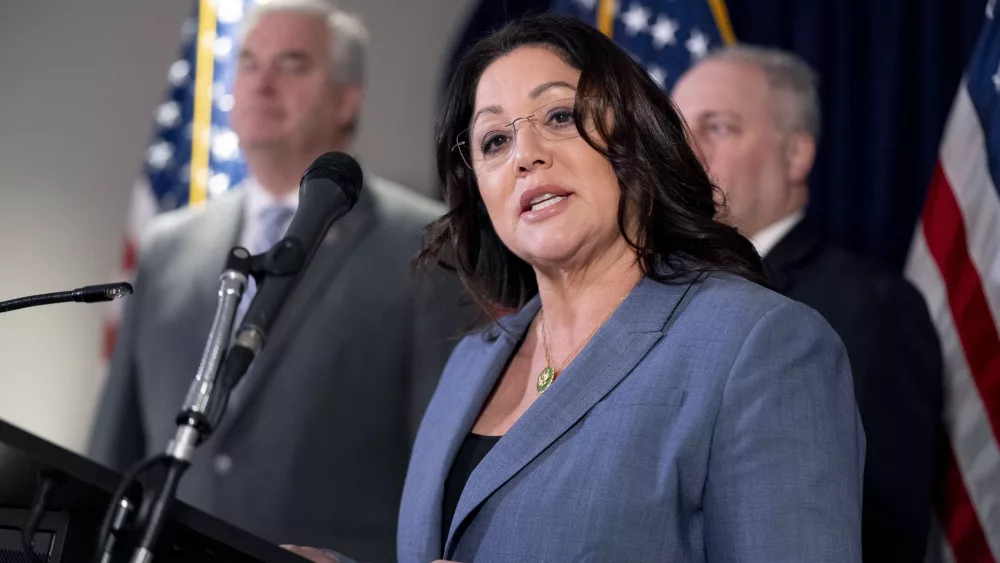PORTLAND, Ore. (AP) — Kendra Sawyer spoke with her dad from the Deschutes County jail and told him she loved him. Six hours later, in the throes of opioid withdrawal, the 22-year-old took her own life.
A year later, Sawyer’s father, Kent, is left wondering whether his daughter, troubled as she was, might still be alive if the jail hadn’t failed to provide her with medicine to ease the agony of her withdrawal, as he claimed in a recently filed lawsuit.
“Kendra was screaming in pain and crying for hours and hours, and nobody was doing anything,” Sawyer said. “No one truly deserves to die in a painful way.”
Oregon jails could soon see a rise in the number of inmates struggling with opioid addiction like Kendra, if efforts are successful during this legislative session to roll back Measure 110, the state’s first-in-the-nation drug decriminalization law that legalized the possession of “personal use” amounts of illicit drugs such as heroin. In response, state lawmakers from both parties are pushing for more funding for medications used to treat opioid addiction in jails.
The measure, passed by voters in 2020, has come under fire as Oregon struggles with a fentanyl crisis that’s fueled one of the nation’s biggest spikes in overdose deaths, and overhauling it is a top priority during this year’s legislative session.
The latest proposal would allow jails seeking to create or expand medication treatment programs to apply for grants from a $10 million fund. It has bipartisan support and the backing of public health advocates and some in law enforcement.
“This is a policy that sets politics aside and that really is about what jails need to take care of people,” said Democratic state Rep. Pam Marsh, who drafted the measure. “If we are serious about providing treatment for people, it’s an obvious gap to fill.”
In Lincoln County, for example, the jail currently spends nearly $50,000 a month — or more than $1,600 a dose — on addiction medication for 30 inmates, Marie Gainer, the corrections sergeant who oversees the program, said in an email. The jail program on Oregon’s rural Pacific Coast, about 130 miles (210 kilometers) southwest of Portland, treated 91 inmates last year, she said.
Backers of jail-based treatment programs say they save lives by allowing people to continue or start recovery while incarcerated.
Roughly 60% of people in American jails have substance use disorders, federal data shows, and overdose is a leading cause of death for people newly released, partly because their tolerance diminishes when they’re not using behind bars.
Yet just under a quarter of jails provide opioid addiction medication to people who had prescriptions before incarceration, and even fewer — 19% — offer treatment for people without prior prescriptions, according to the most recent federal data from the 2019 Census of Jails.
Courts, however, have recently ruled that withholding addiction treatment medication from inmates with prior prescriptions violates federal law, and more states and local counties have taken steps to expand access.
In Washington state, for example, lawmakers want to dedicate an additional $7.4 million to the issue, on top of the $7.5 million already approved in the biennial budget last year. Part of the proposed boost would come from opioid settlement funds, a month after the state attorney general announced a nearly $150 million settlement with drugmaker Johnson & Johnson. If passed by the Legislature, the supplemental funding would double the number of jails providing medication, from 19 to 38, Gov. Jay Inslee’s office said in an email.
Other states — including New York, Vermont, Maryland and Utah — have passed laws requiring jails to provide medication for opioid use disorder to people who already had prescriptions when they were jailed.
When Utah’s law took effect last May, Colin Conner, who struggled with opioid addiction for years, had been in a Salt Lake City jail for nearly two months. By that point the jail had already discontinued his methadone, which he had been prescribed before his arrest, his father said.
Cut off from his medication, Colin went through agonizing withdrawal, Jon Tyler Conner said. His cravings returned and his drug tolerance decreased. Just days after his release last June, he died of a fentanyl overdose at the age of 32.
“If they would have treated him as they should have by law, he would have been on his methadone. He wouldn’t have died,” said Conner, who lives in Seattle.
The Salt Lake County Sheriff’s Office said in an emailed statement that it couldn’t comment “due to the potential threat of litigation.”
In Oregon, Sawyer filed a federal lawsuit against Deschutes County alleging wrongful death and negligence in his daughter Kendra’s death. It accused the county of failing to treat her physical and mental health needs. According to the complaint, records that included information about Kendra previously attempting suicide were available to intake officers during her booking.
Sawyer’s lawyer, Ryan Dreveskracht, said he is still waiting for Kendra’s medical records but has seen no evidence that she received withdrawal medication.
Deschutes County “does not agree with the allegations in the complaint and intends to vigorously defend the lawsuit,” county counsel David Doyle said in an email.
Jails in other states have had success with offering opioid addiction medication behind bars.
Since 2018, New York’s Saratoga County jail has provided such medication for inmates who had prescriptions at booking, and in 2020 it started administering it to people without prior prescriptions who were identified as having an opioid addiction during intake screening.
Ben Deeb, who oversees the program, said participants have had a recidivism rate of 16% since it began.
“That proves that when you give people the medications they need, you provide the education, trauma therapy and peer support they need … that they succeed,” he said. “This needs to be what corrections looks like.”
States have a key role to play in boosting funding for such treatment in jails that is often overlooked, said Jonathan Larsen, legal program manager for the Center for Public Health Research at Temple University in Philadelphia.
“At the end of the day, we already know how to treat this,” he said.
In Oregon, Sawyer knows his lawsuit won’t bring Kendra back. But he hopes his daughter’s story sparks change and raises awareness.
“A little more action can save a lot more lives,” he said.
___
Associated Press writer Hallie Golden in Seattle contributed to this report.
Brought to you by www.srnnews.com








